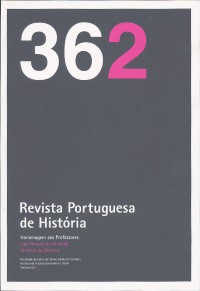Please use this identifier to cite or link to this item:
https://hdl.handle.net/10316.2/46052| DC Field | Value | Language |
|---|---|---|
| dc.contributor.author | Silva, António Martins da | - |
| dc.date.accessioned | 2019-03-19T16:39:44Z | |
| dc.date.accessioned | 2020-10-05T05:41:52Z | - |
| dc.date.available | 2019-03-19T16:39:44Z | |
| dc.date.available | 2020-10-05T05:41:52Z | - |
| dc.date.issued | 2003 | - |
| dc.identifier.issn | 0870-4147 | - |
| dc.identifier.issn | 2183-3796 (digital) | - |
| dc.identifier.uri | https://hdl.handle.net/10316.2/46052 | - |
| dc.description.abstract | É objectivo deste trabalho analisar o percurso da ideia de Europa unida desde o termo da II Guerra até 1948, ano em que culminam as grandes realizações representativas dos povos (congressos e conferências diversas), com vista não só ao esclarecimento e à tomada de consciência sobre a necessidade da união da Europa, como também à definição dos moldes em que esta deveria realizar-se. No sentido de influenciar e pressionar as instâncias de poder político, são tomadas resoluções, aprovados planos, endereçados apelos e recomendações aos governos, aos parlamentos e às organizações de cooperação entretanto criadas (como é o caso da Organização Europeia de Cooperação Económica e do Pacto da União da Europa Ocidental) para que tomem iniciativas conducentes ao avanço real e à realização prática da unidade europeia. | por |
| dc.description.abstract | The purpose of this essay is to follow the development of the idea of a united Europe, from the end of World War II until 1948: in this year, some great achievements representative of nations (such as meetings and conferences) have been accomplished, in order to clarify and raise awareness of the need of a united Europe, as well as to define the way by which this desideratum could be attained. Several decisions were taken, plans approved and appeals addressed to governments, parliaments and cooperation organizations created in the meantime, trying to influence these agents of political power to put in practice the necessary means to actually achieve the unification of Europe. | eng |
| dc.language.iso | por | - |
| dc.publisher | Imprensa da Universidade de Coimbra | - |
| dc.rights | open access | - |
| dc.title | A ideia de Europa unida no pos-guerra: (1945-1948) | por |
| dc.type | article | - |
| uc.publication.collection | Revista Portuguesa de História nº 36 vol. 2 | - |
| uc.publication.firstPage | 361 | - |
| uc.publication.issue | 36 | - |
| uc.publication.lastPage | 395 | - |
| uc.publication.location | Coimbra | - |
| uc.publication.journalTitle | Revista Portuguesa de História | - |
| uc.publication.volume | 2 | por |
| dc.identifier.doi | 10.14195/0870-4147_36-2_22 | - |
| uc.publication.orderno | 22 | - |
| uc.publication.area | Artes e Humanidades | - |
| uc.publication.manifest | https://dl.uc.pt/json/iiif/10316.2/46052/271116/manifest?manifest=/json/iiif/10316.2/46052/271116/manifest | - |
| uc.publication.thumbnail | https://dl.uc.pt/retrieve/12204423 | - |
| item.fulltext | With Fulltext | - |
| item.grantfulltext | open | - |
| Appears in Collections: | Revista Portuguesa de História | |
Files in This Item:
| File | Description | Size | Format | |
|---|---|---|---|---|
| a_ideia_de_europa_unida_no_pos-guerra.pdf | 379 kB | Adobe PDF |  |
Items in DSpace are protected by copyright, with all rights reserved, unless otherwise indicated.
